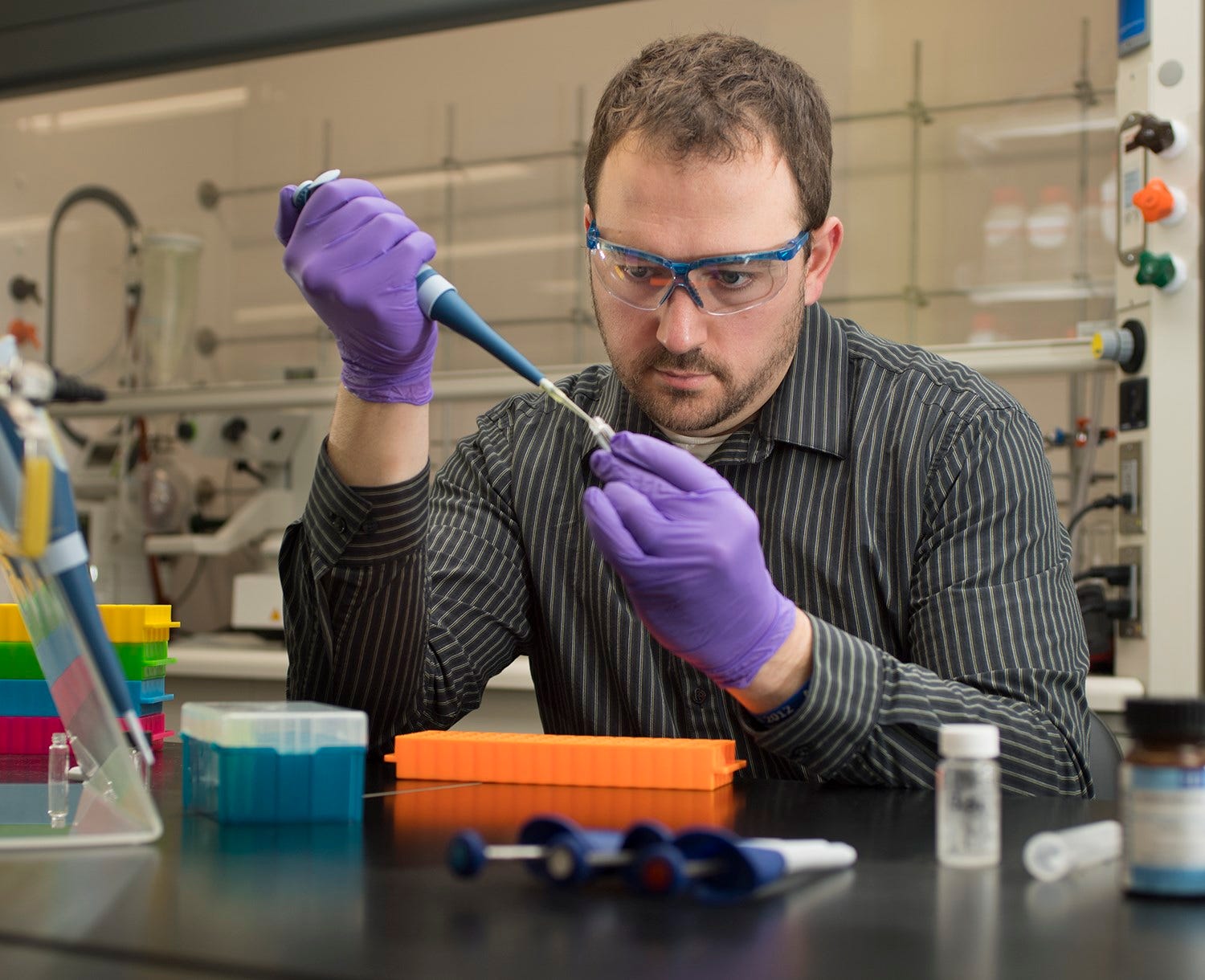$1.6M Boosts New Technologies for Hypoglycemia
 Webber's lab wants to invent a material that could sense blood glucose and deliver glucagon if needed. (Photo courtesy: Notre Dame)
Webber's lab wants to invent a material that could sense blood glucose and deliver glucagon if needed. (Photo courtesy: Notre Dame)
Subscriber Benefit
As a subscriber you can listen to articles at work, in the car, or while you work out. Subscribe NowCaring for a child with type 1 diabetes is a heavy burden for parents and not limited to the daily grind of tracking blood sugar and dosing insulin; for many, the weight of worry is far greater. Parents live in fear of hypoglycemia, a condition that—in severe instances—can lead to coma or even death. University of Notre Dame researcher Dr. Matthew Webber admits his idea to create a technology that could autonomously detect the condition and deliver a life-saving drug may sound like science fiction, but it recently earned a $1.6 million boost to make it more likely.
Oftentimes, parents’ greatest fear is that their child could have a hypoglycemic episode while he or she is sleeping and no one is nearby to notice, says Webber.
“The parents of these diabetic individuals have a lot of morbidity; increased risk of depression, and they’re awake multiple times per night, so they’re not getting a good night’s sleep,” says Webber, a chemical and biomolecular engineering assistant professor. “There’s a lot of stress and anxiety associated with caring for a diabetic child—just for fear of hypoglycemia.”
Hypoglycemia occurs when there’s too much insulin and not enough sugar (glucose) in the blood. Glucagon is the solution; it acts opposite of insulin to raise blood glucose when it gets too low. Webber envisions “having some device on board [in contact with the body] that could prevent the severe lows from occurring.”
“Having such a device or technology would potentially act as an insurance policy,” says Webber. “What we’re thinking about is making a prophylactic (preventative) device of some sort with glucagon. Maybe it’s a wearable, injectable or a transcutaneous (applied to the skin) device—some technology to autonomously sense blood glucose and deliver glucagon in the event the blood glucose went a little too low.”
This is where Webber’s expertise comes in; his laboratory and research team focus on engineering materials. For this particular project, they’re aiming to invent a material which would need to be in contact with the body in some way.
“We’re trying to think about making materials that can remove some of that burden from a person and place it on smarter technology. We don’t know exactly how we’re going to do this yet,” says Webber. “Could we have a material that could sense blood glucose, and respond by some sort of change—maybe the material dissolves and the glucagon is released? Maybe [the material] swells or undergoes some sort of shape change in response to low blood glucose; say the glucagon is trapped in mesh, and it now can escape that mesh.”
Webber theorizes, ultimately, perhaps a sticker applied to the child’s skin at bedtime could sense blood glucose and deliver glucagon if needed, but acknowledges, “we’re a long way from that.”
However, he’s working toward such lofty goals after a recent $1.6 million grant for early-career investigators from the American Diabetes Association. The five-year award aims to find “a new generation of brilliant scientists at the peak of their creativity” and support them “on the road to breakthrough discoveries.”
“[Scientists] who do the kind of work I do—make materials for the delivery of therapeutics—could potentially work in lots of different diseases and areas,” says Webber. “This [award] gives us the freedom to continue pursuing technologies we care about in-line with advancing therapeutic objectives with diabetes, versus migrating to cancer, cardiovascular disease, or some other thing we could make materials for as well. This helps us…stay committed to diabetes and have the resources we need to explore and invent new strategies in diabetes.”
Describing the award as a five-year runway to explore the possibilities, Webber is hopeful his team could help uncover a method to improve the lives of people with diabetes and the people who worry most about them.
Webber cautions it could take years or even decades to develop such a tool and understands that can be discouraging for patients and their families.
Webber says the team must also consider the bigger picture, beyond just developing the material.

